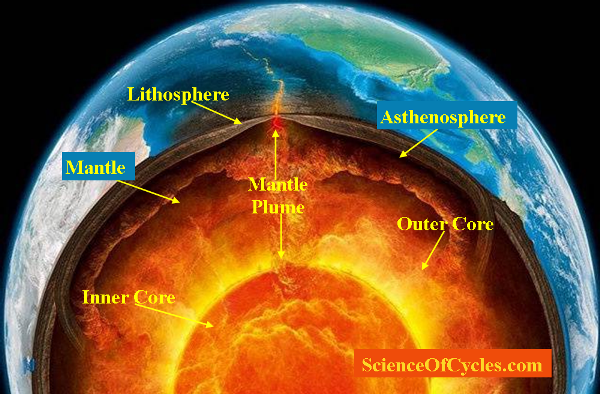Researchers at ETH Zurich have demonstrated how well a mineral common at the boundary between Earth’s core and mantle is contributing towards the cooling down of the interior due to the way in which it conducts heat. This observation has led them to think that the dissipation of the Earth’s heat could be sooner than previously thought.
About 4.5 billion years ago, high temperatures got more on the surface of the Earth, and its covering by a deep ocean of magma also took place. But the planet’s surface cooled to form a brittle crust. Many dynamic processes were brought into motion by the enormous thermal energy thus emerging from Earth’s interior. These motions included mantle convection and plate tectonics.

But still, such questions are unanswered that how fast the Earth cooled and how long it took for Earth to bring such heat processes to an end. But the answer may lie in the thermal conductivity of minerals forming the boundary between Earth’s mantle and its core. It was observed by the Scientists at ETH Zurich that the Earth’s mantle is in direct contact with the iron-nickel melt of the planet’s outer core. There is potentially a lot of heat flowing here due to the temperature gradient between the mantle and its aforementioned layer of Core. This layer is formed of the mineral named Bridgmanite.
ETH professor, Motohiko Murakami, and his colleagues developed a measuring system to detect the thermal conductivity of bridgmanite in the laboratory, under pressure and temperature that used to prevail inside the Earth.
Murakami has mentioned that such measurements have enabled them to see that the thermal conductivity of bridgamnite is about 1.5 times higher than assumed. Thus, this observation suggests clearly that heat flow from the Earth’s core into the mantle is also higher than expected. So, this greater heat flow was predicted to be the reason for the increased cooling of Earth by the increased mantle convection.

Such results have led researchers to find about the evolution of new dynamics on the Earth. So, they made the conclusion that Earth, like other planets, is also cooling down gradually. But the researchers are still uncertain about the time span of the procedure as they have mentioned that they still don’t know about such kinds of events to pin down their timing.
For more information click here


